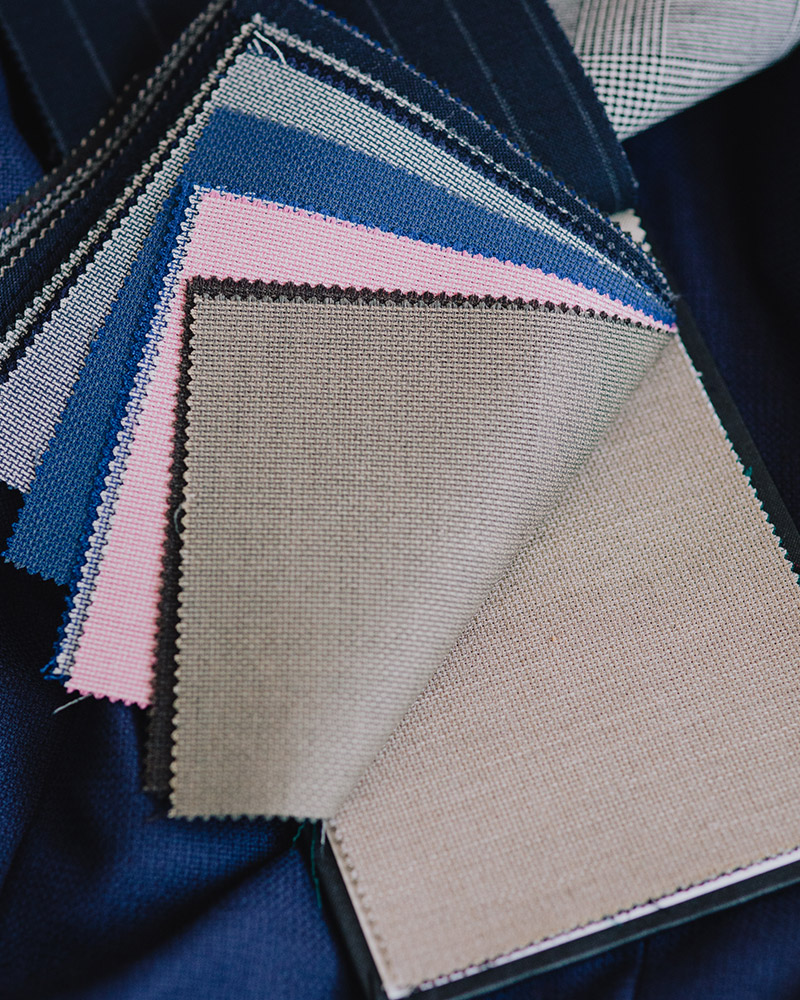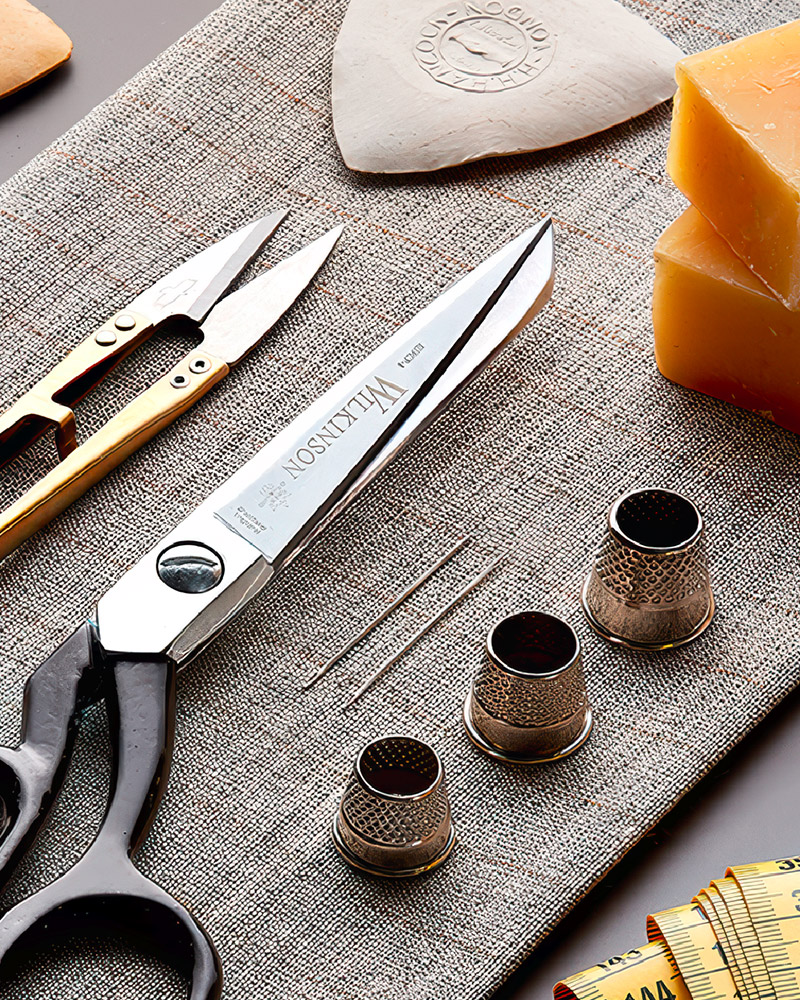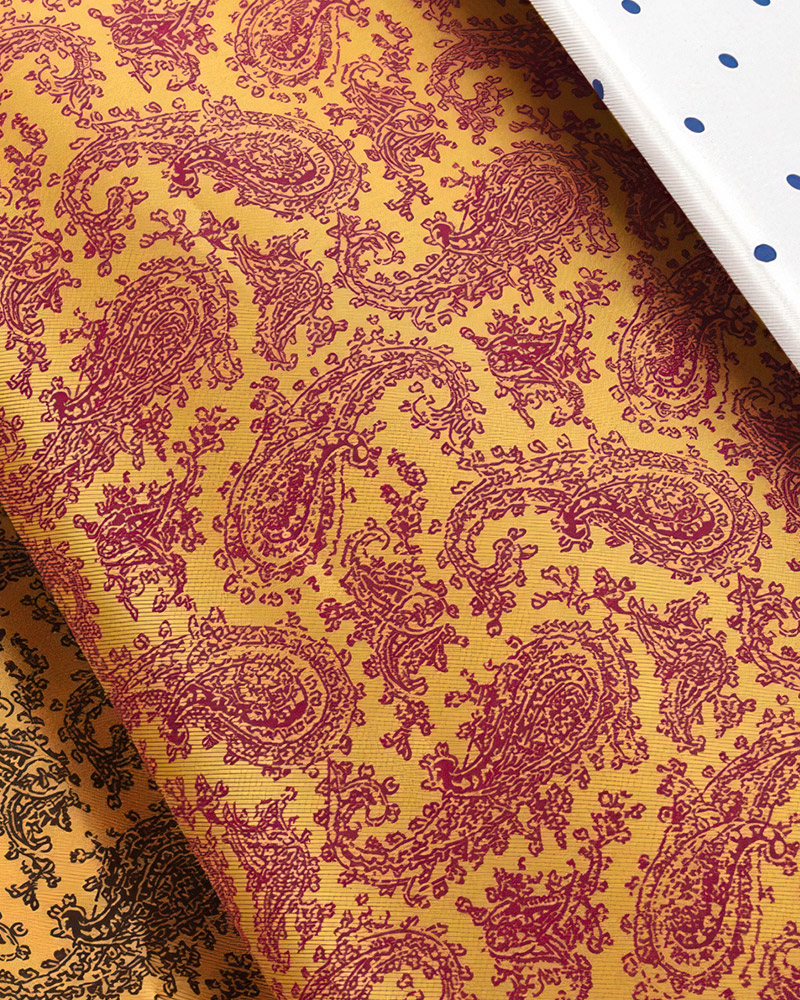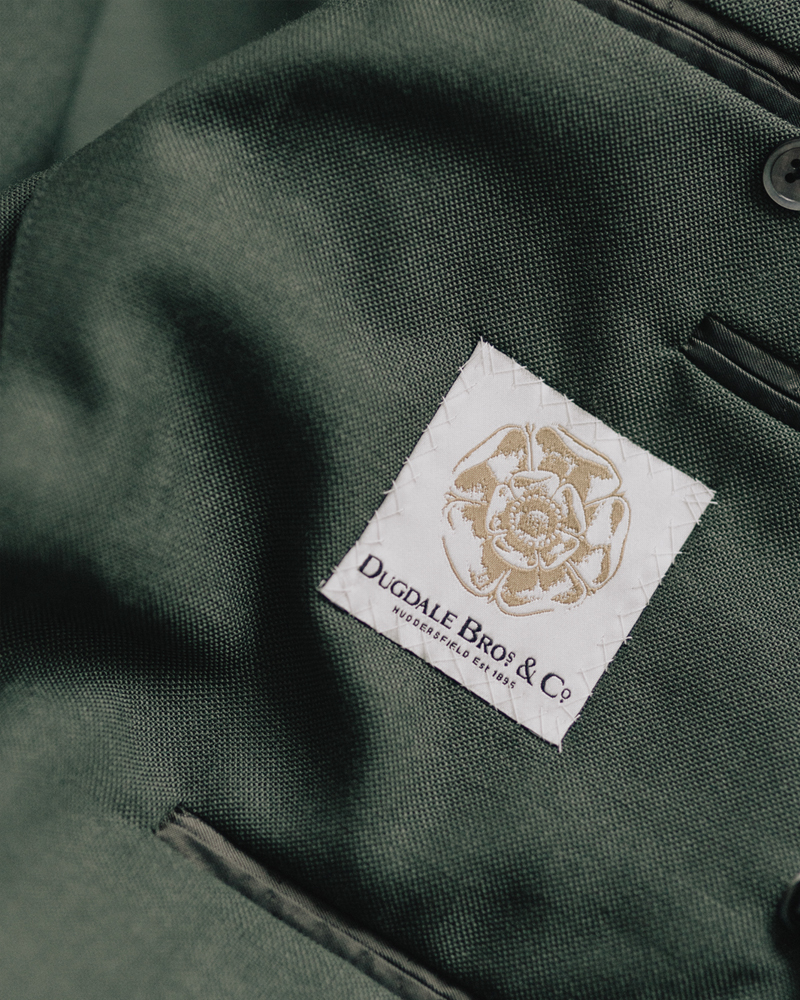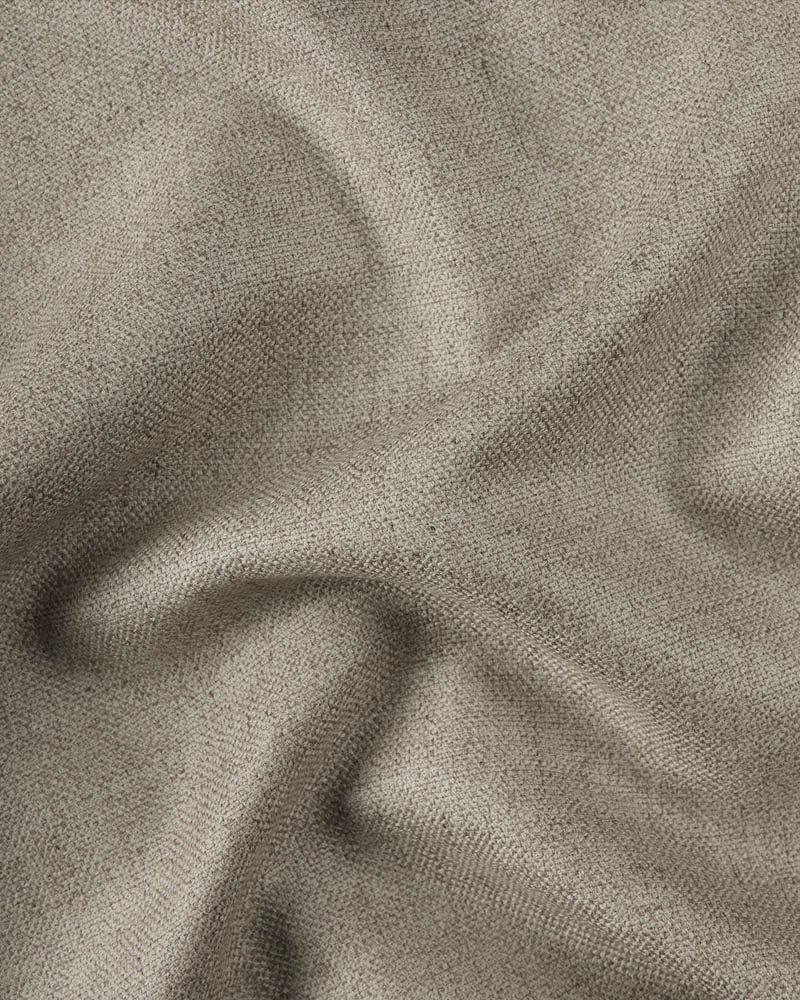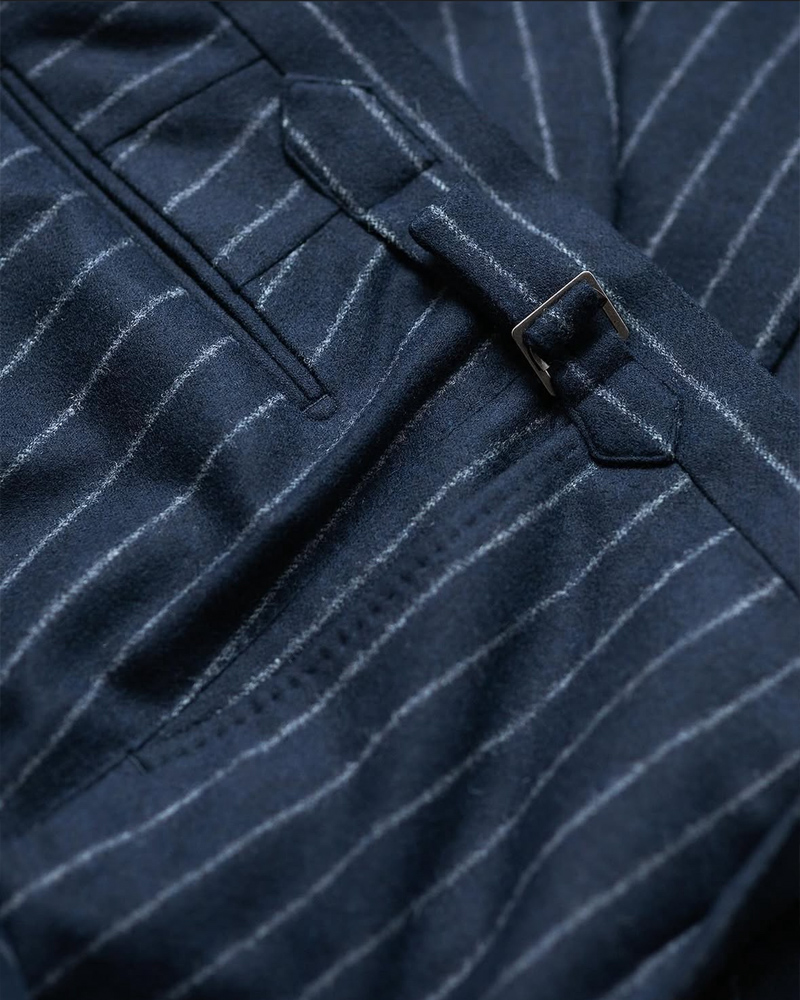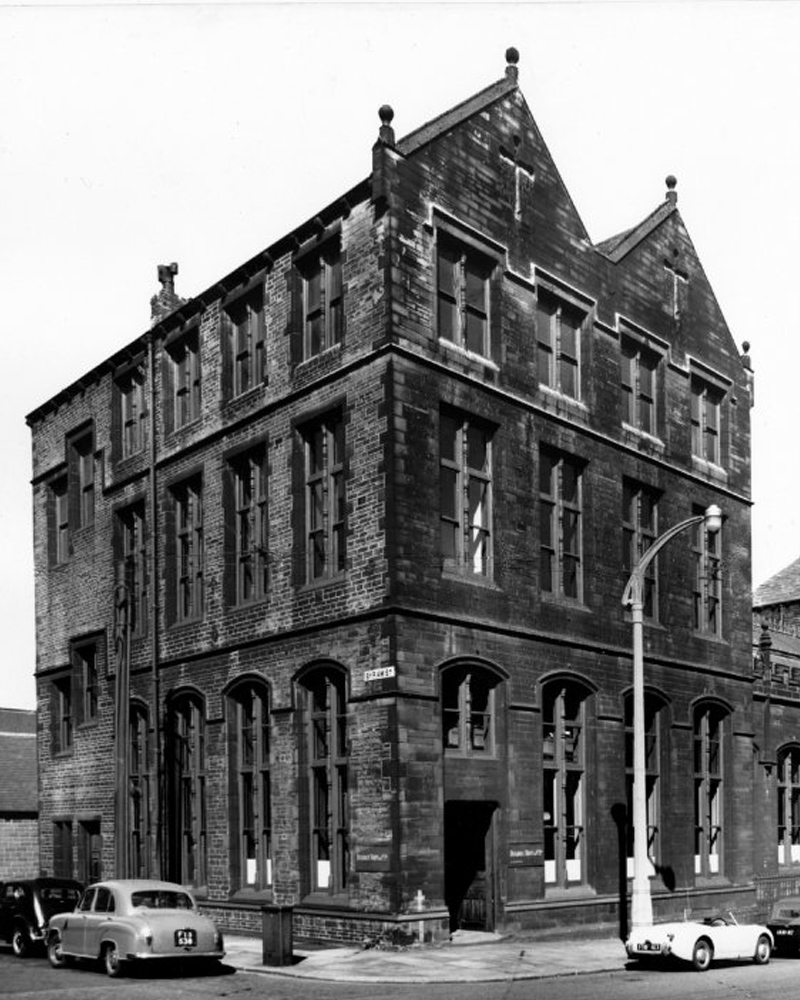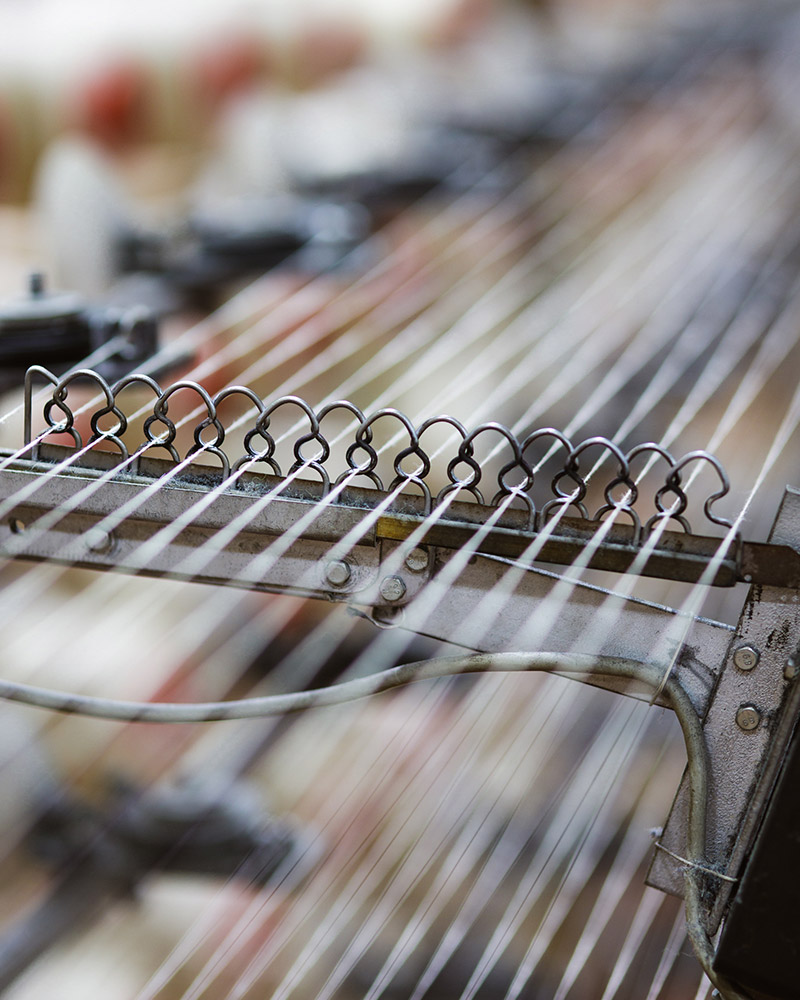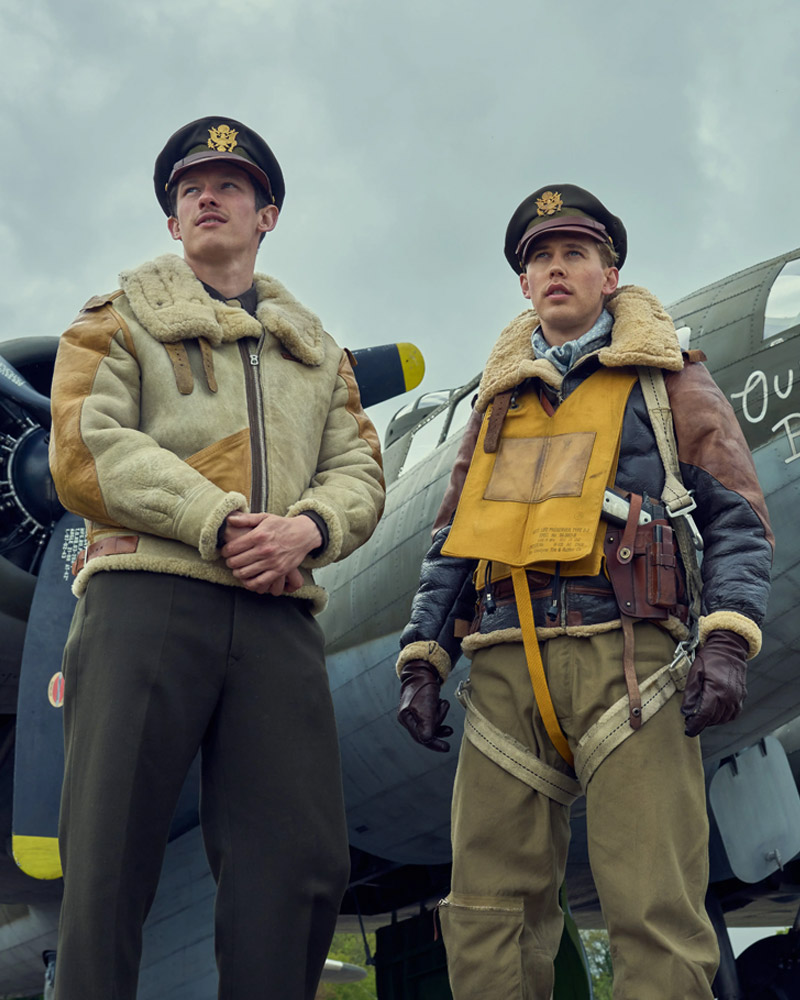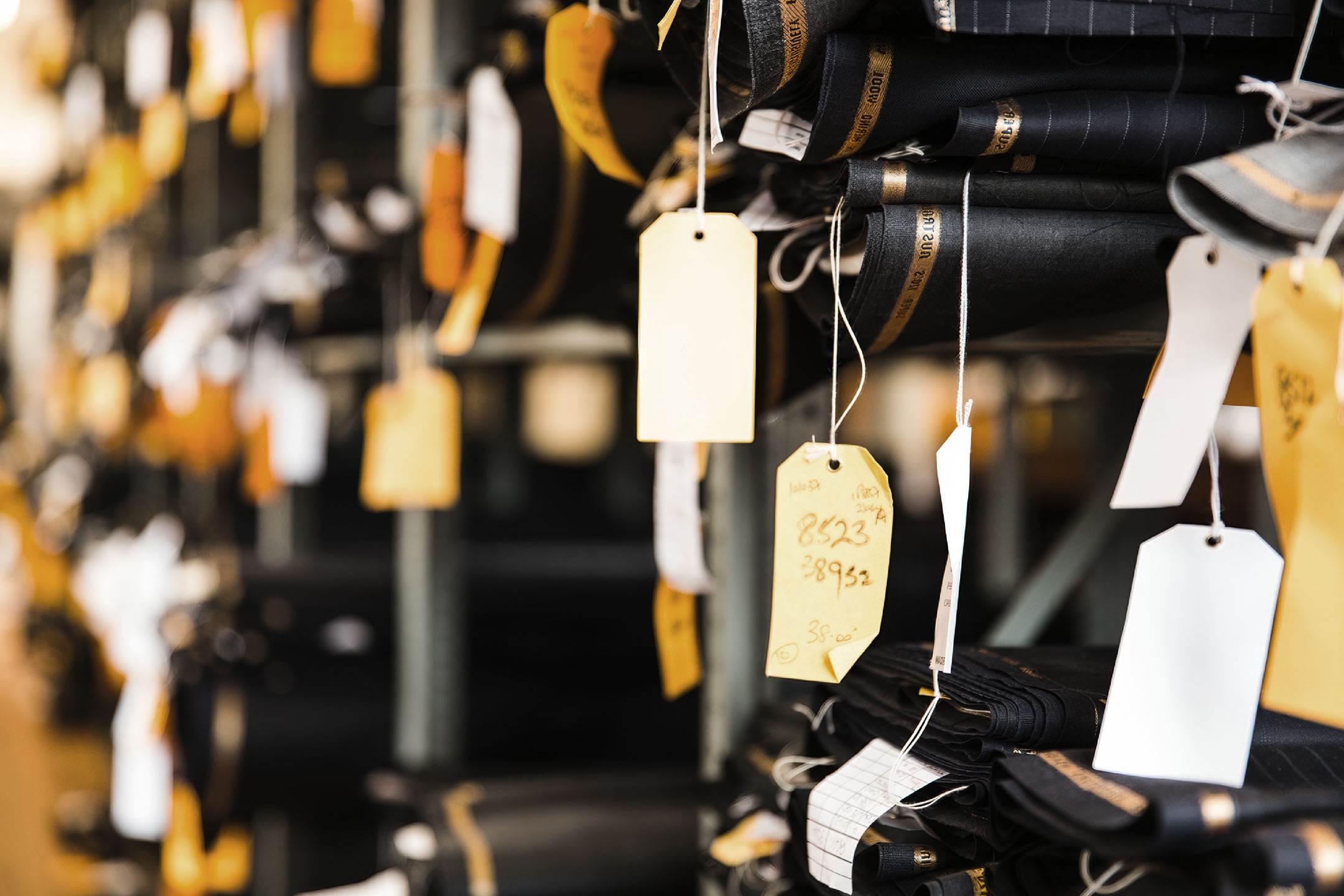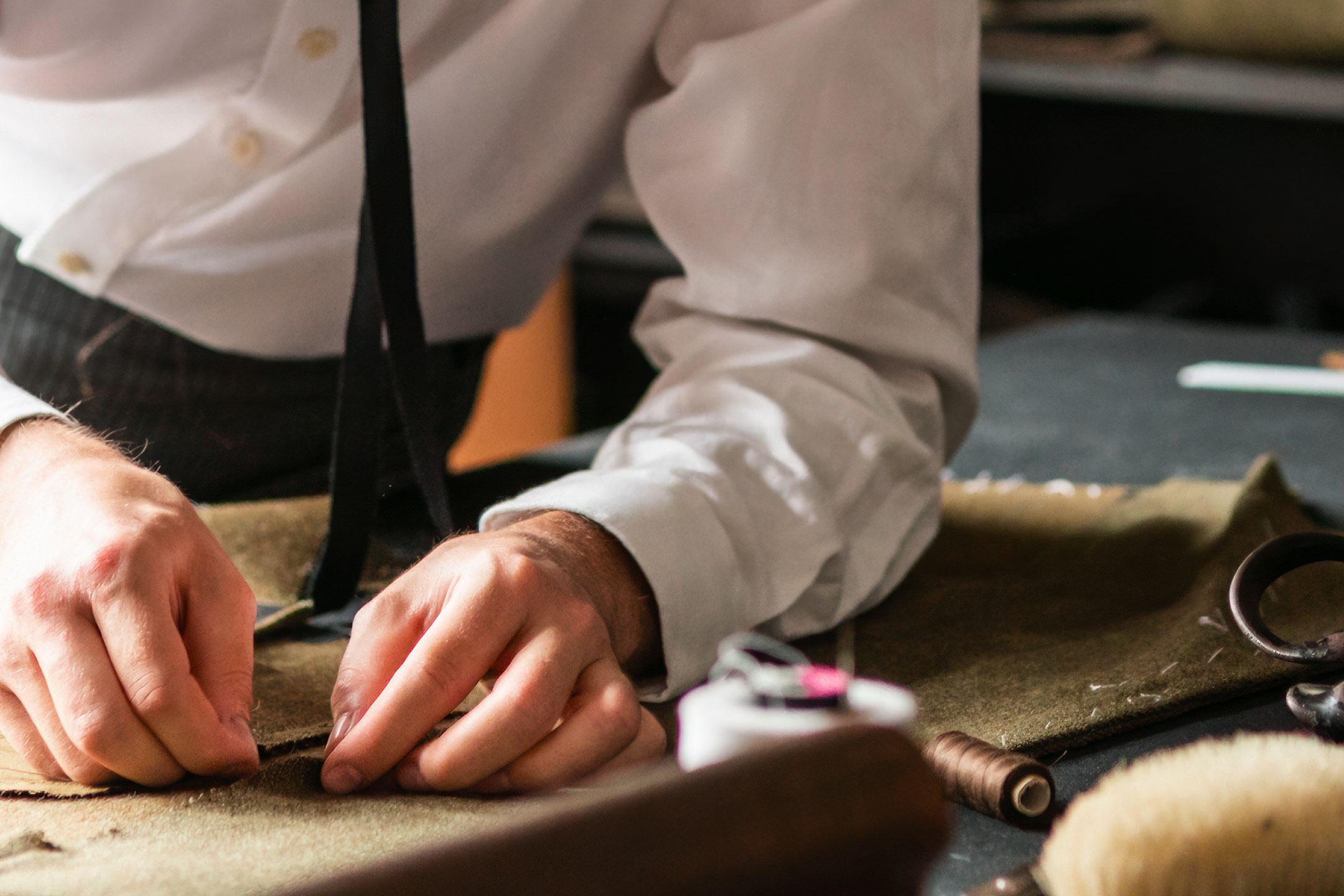Here at Dugdale Bros, it’s no secret that we’re passionate about our rich textile heritage – and that of the region in which our head office is located – but we’re also interested in stories about the people who have been involved in the industry throughout its eminent history.
Historical Stories Of Endeavour: Sheep To Man Record
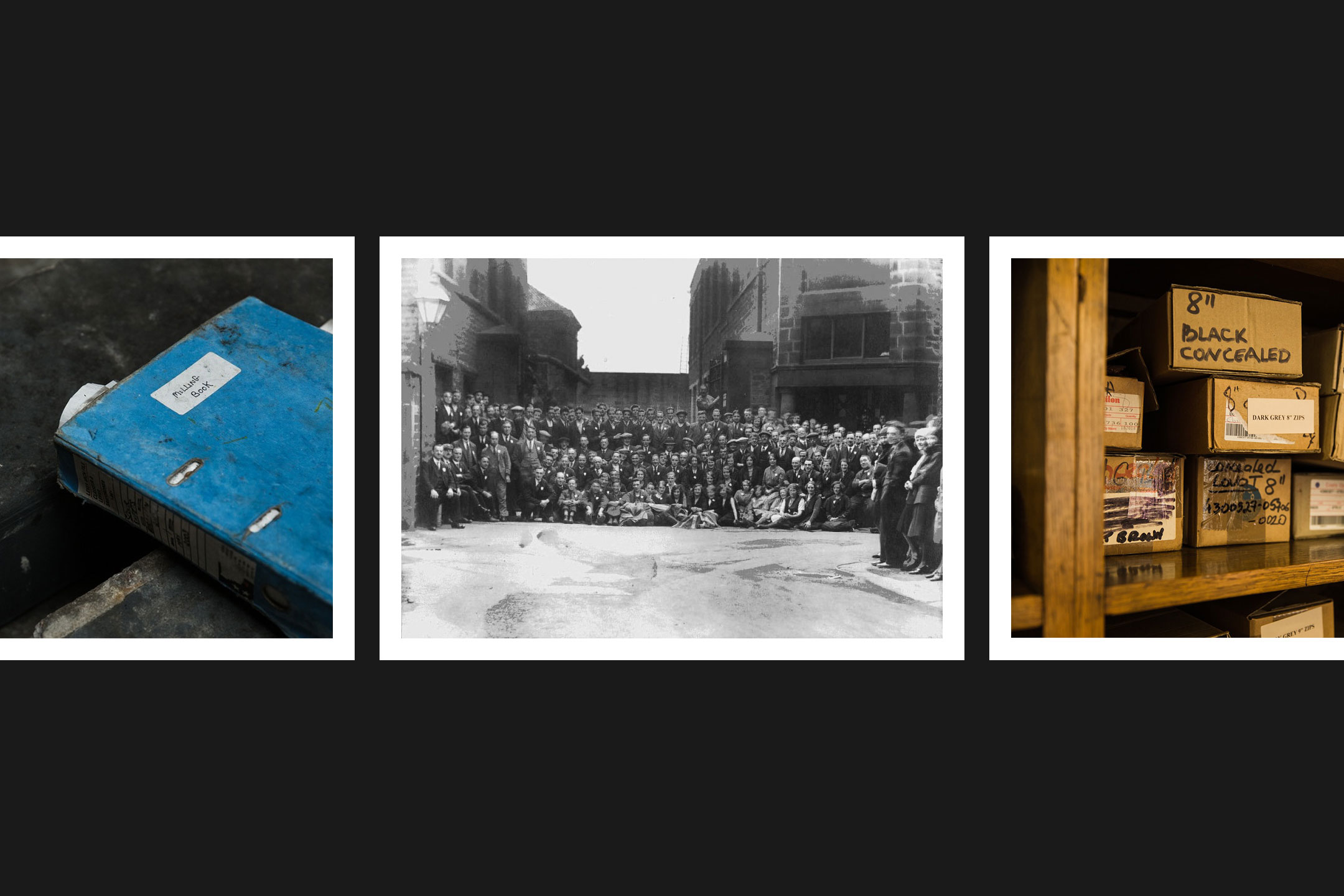
We’re keen to champion these individuals and reflect upon their contributions to the enduring clothmaking legacy our town holds today. And, to help us celebrate these craftsmen, we spoke to architectural researcher, historian and writer, Chris Marsden, for our recent blog post…
The story of sheep to man is one which dates back to 1811, when a suit was made in 13 hours 15 minutes at Greenham Mills, Newbury, to win a £1,000 wager. By 1898, a mill in Galashiels held the record – eight hours – for the fastest end-to-end, sheep-to-wearer process of creating a suit.
In 1898, Thomas Kitson – who was born in Bradford in 1840, emigrated and owned a mill in Stroudsburg, Pennsylvania – set a new record of six hours and four minutes.
During a Bradford Rotary lunch on 17th April 1931, Sir Malcolm Campbell – who was holder of the world land speed record – asked if Yorkshire clothmakers could beat the American suit record. Before Sir Malcolm left, two manufacturers and a tailor had accepted the test.
Woollen manufacturers J T and J Taylor Ltd and tailors, Price Ltd of Leeds, broke the record with a time of three hours 20 minutes and 30 seconds on 23rd June 1931 in Batley.
The next day – 24th June 1931 – challengers attempted a new record, and it took place in a village only a couple miles away from Huddersfield in the Colne Valley – Milnsbridge.
This time, Price Ltd worked together with well-known woollen manufacturers, John Crowther and Sons Ltd and broke the record with a new time of three hours, nine minutes and 46 seconds.
The manufacturing side of the whole operation took place at Union Mills, and the tailoring was carried out in the nearby Burdett Mills.
It was a kersey weave for sportwear – weighing in at 18-19oz – and had white warp with a brown dyed weft.
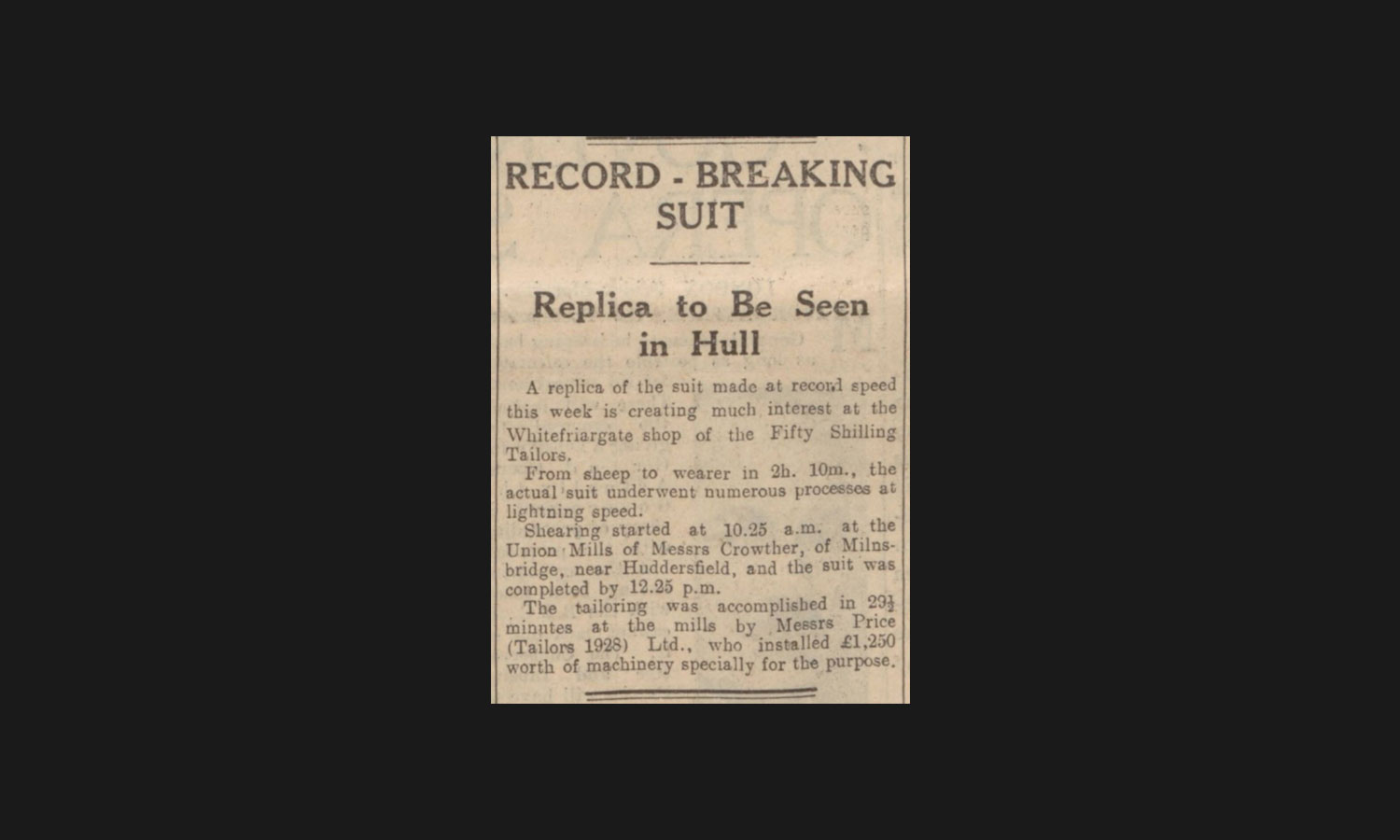
British Newspaper Archive – Hull Daily Mail 26th June 1931.
The entire process included shearing, dyeing and drying of the weft, as well as the teasing, carding, spinning and winding. After weaving on two looms, it was then onto the scouring, milling, washing, tentering, trimming and pressing. It was a very busy operation, which required all hands on deck to achieve the new time.
The finished product – a three-piece, made-to-measure suit for J H Thomas, Secretary of State – came to life in just 29 minutes and 30 seconds, and this is testament to the high level of skill and expertise which was in action that very day.
To celebrate being the new record holders, on Thursday 2nd July, John Crowther and Sons hired 51 coaches from Hanson to take 1,530 employees to Blackpool for the day – complete with lunch, tea and admission to the Tower and Winter Gardens – a wonderful way to celebrate a collaborative effort!
The record may have been broken many times since this – with Melbourne College of Textiles taking the mantle in 1987, at one hour 27 minutes 59 seconds – but what really matters here is the story of endeavour our townspeople represent.
So, what does this say about them and their efforts to put our region on the industry radar?
Well, Crowthers’ and Price’s willingness to step up and accept the challenge – in a cooperative manner – to beat the American record, highlights the unwavering commitment these people had in celebrating the textile trade.
A big thank you to Chris Marsden for his contribution to our blog, we hope our readers find the legacy of our town’s folk as fascinating as we do!
